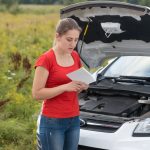How To Prepare A Winter Emergency Kit For Your Vehicle
If most of your time driving Ontario’s roads in the winter is spent in urban areas, you may think that you don’t need to prepare a winter emergency kit for your vehicle. Why bother? You’re always close to help should you need it, right?
Well, here’s something to take into consideration: During the early November Ontario snowstorm, over 400 vehicle collisions were reported in a single night!
Traffic backups went for miles and lasted hours. Cars that slid off the road were at the mercy of overworked first responders and tow truck companies. Thousands of Ontarians had their plans changed and greatly delayed because of a single snowfall.
No matter where you drive or how often you drive, it’s important to ensure that if a worst-case scenario strikes, you and your passengers will be prepared.
Considerations for your emergency kit
The Government of Canada recommends that everyone outfit their vehicle with the supplies needed to survive 72-hours in extreme weather-related conditions. Keep this in mind when storing food, water, and other perishable items in your kit.
Also, keep in mind that you might require extra items in your winter emergency kit depending on your geography or if you’re a city driver heading far north for a trip into the Ontario wilderness. Take, for example, a compass, local emergency contact numbers, and even medication should you be on any.
What to include in your emergency kit
As you get your emergency kit together, you can cross out the items on this list. Vitally important items are written in CAPITAL LETTERS and bolded for extra emphasis.
- FOOD
- WATER
- Blanket
- Extra clothing and boots
- FIRST AID KIT
- Small shovel, scraper, snowbrush
- Candle in a deep can and matches
- Wind-up flashlight
- WhistleRoadmaps
- Copy of your emergency plan and personal documents
- Sand, salt, or cat litter (non-clumping)
- Antifreeze/windshield washer fluid
- Tow rope
- Jumper cables
- Fire extinguisher
- Warning light or road flares
- Tire change kit and spare tire
What to do when in an emergency situation
You cannot predict how long it will take for help to arrive. Because of this, you have to be smart about how you conduct yourself in an emergency situation. Here’s how:
- Remain calm: Get your breathing under control, especially if you just had a scenario where you veered off the road, got into a collision, or hit wildlife.
- Don’t tire yourself out: Shovelling snow can be deadly in the extreme cold with limited car battery life and fuel.
- Carbon monoxide: Shut off the car when it’s not absolutely necessary to have it on and make sure the exhaust pipe isn’t blocked by snow.
- Signals: Turn on your hazard lights and spark your flare or warning light if you have one available to you.
- Pay attention: If the conditions are bad, a passerby may not be able to see you if you’ve veered off the road. Look out for passersby and safely try to get their attention.
- Stay warm: Above ALL ELSE, stay warm and keep your fingers and toes moving.
Emergency kits are for those worst-case scenarios, and you want to be ready.
We’re all going to get stuck in bad weather this winter, so make sure you’re prepared.
We’d be happy to help ensure your vehicle is ready for the cold temperatures and bad weather. Get in touch!







